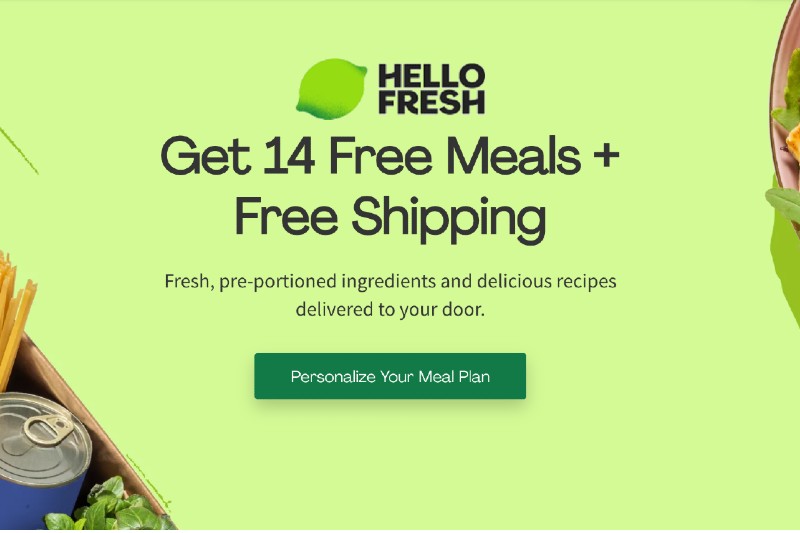In a sea of home meal delivery services, it’s a dizzying ordeal trying to figure out which one is best. While combing through the competition, it can be easy to forget the two companies that pioneered the home meal kit delivery concept.
Blue Apron and Hello Fresh were among the first with the idea to provide pre-portioned, fresh ingredients delivered right to your doorstep, making home-cooked meals accessible to everyone. Since their inception, dozens of other home meal delivery services have popped up, catering to more niche markets. Due to this increased competition, Hello Fresh and Blue Apron have had to evolve their own business models to keep up.
So now, we will look at what the OGs of home meal delivery look like now and how they stack up.
The Price
Tie
Since they are each other’s main competition, it’s not surprising that the two brands tie here. Based on a meal plan for two at 4 recipes a week, both come out to (without discounts) $9 a meal with a $10 shipping fee.
Quantity

Winner: Hello Fresh
Blue Apron and Hello Fresh operate a bit differently in terms of the quantity of food that can be delivered to you. Both companies, however, only prep for two or four people.
Hello Fresh offers a little more flexibility across its menu offerings, allowing you to select between two or four people across all menu options. They also let you pick between two and six recipes per week, which means as few as two meals per week and as many as 24.
Blue Apron offers four menu options, one of which is the family plan that serves four. The other three options are designed for two people. As far as recipes, in its Signature and Signature for 4 plans, you can choose two, three, or four
Menu Customization
Winner: Hello Fresh
As mentioned, with Blue Apron, your menu options are restricted between four choices: Signature for 2, Signature for 4, Vegetarian for 2, and Wellness for 2. Once you pick your menu and the number of recipes, you can select between the menu offerings on their weekly rotating menu. The problem, if you choose the wellness or vegetarian plan, your options are drastically less than the Blue Apron Signature Menu.
With Hello Fresh, you can choose between three of six menu preferences when you sign up: Meat and Veggie, Family Friendly, Quick and Easy, Veggie, Calorie Smart, and Pescatarian. The more you specify your preferences, the more you narrow your choices, but it’s more choice than Blue Apron gives you, to begin with.
Dietary Restrictions
Tie
When it comes to dietary restrictions such as vegan, keto-friendly, paleo, gluten-free, and many other common nutritional expectations these days, neither Blue Apron nor Hello Fresh are the best places to look. Although they have a few options that fall under these categories, there aren’t enough options to say that they cater to them. These days, many other brands focus on niche dietary needs that would be better fitting.
Recipe Variety and Ingredient Creativity

Winner: Blue Apron
Although both companies do a great job creating dishes that satisfy a wide range of tastes through both culturally traditional and fusion-style dishes, Blue Apron slightly edges out Hello Fresh in this category.
Both recipe cards are almost identical in structure. But in our opinion, Blue Apron seems to push the boundaries a bit harder in terms of ingredients and creativity—opening up people’s food horizons a bit more. With Blue Apron, you can find less-common ingredients such as duck breast, tamarind, and delicata squash.
Recipe Approachability
Winner: Hello Fresh
It makes sense that the less creative options might be preferred for beginners in the kitchen. Hello Fresh’s straightforward approach to recipes is great for the less adventurous eater.
Packaging
Winner: Hello Fresh
Although both brands try their best to minimize packaging and its carbon footprint, Hello Fresh edges out Blue Apron in this category. Hello Fresh utilizes more recyclable paper bags, which cuts down on the packaging compared to Blue Apron, which uses a lot of plastic containers to portion ingredients.
Market Extras
Hello Fresh
Both brands offer an extensive market selection, and which is better is a matter of preference. The Hello Fresh market is pretty extensive, offering extra produce or proteins you can add to your meals along with premade snacks and sides.
Blue Apron’s model is a little different. It offers single-week meal kit bundles that let you bump up the number of meals per week you receive, which seems like an attempt to compensate for the lack of up-front options. Blue Apron also has special holiday and grill-kit bundles. You can also get cooking supplies, seasonings, and wine bundles.
We liked that the Hello Fresh market seems more geared towards enhancing your weekly meal plans, whereas the Blue Apron market seems more like they are selling you random cooking supplies. For that, we give Hello Fresh the nod in the market category.
Final Thoughts
In the end, both of these services are excellent options to streamline meal planning at home. Although Hello Fresh edges out Blue Apron in most categories, it’s worth the time and money to try out both for yourself before committing to one or the other.
Editors' Recommendations
- Blue Apron vs. Home Chef — Which is Best in 2022?
- What Is Blue Apron Meal Kit Delivery Service?
- What are the Best Keto Meal Kits for a Low-Carb Lifestyle?
- What Is HelloFresh and How Does It Work?
- HelloFresh vs Home Chef




